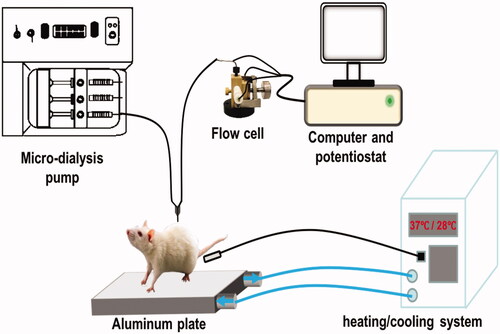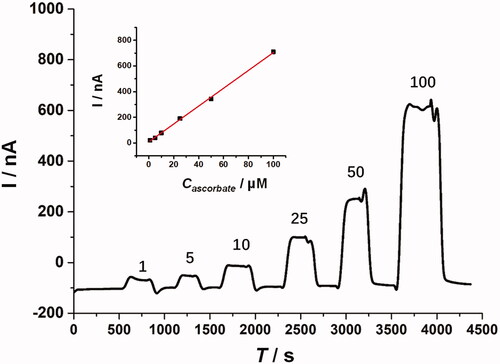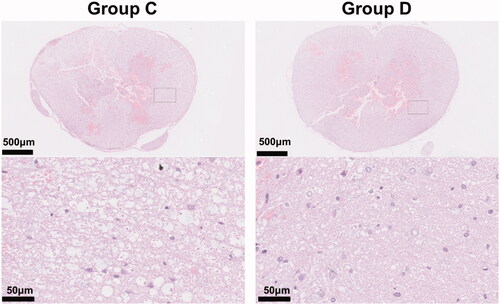Figures & data
Scheme 1. Schematic diagram of the on-line electrochemical method with the SWNT-modified GC electrode integrated with in vivo micro-dialysis for continuous monitoring of spinal cord ascorbate in SCI models.

Figure 1. Current response recorded for ascorbate standard solutions in aCSF with the on-line electrochemical method. Ascorbate concentration was indicated in the figure. Inset, plot of current recorded versus ascorbate concentration. The micro-dialysis probe was perfused with aCSF with a flow rate of 3 μL min−1. The working electrode was applied at +30 mV (vs. Ag/AgCl electrode).

Figure 2. (A) Typical current − time responses of ascorbate recorded in the microdialysates continuously sampled from spinal cord in sham-operated rats. (B) Statistical results of the spinal cord ascorbate level in Group A (upper trace), Group B (lower trace) of sham operated rats. The conditions of the intervention are indicated in the figure. Other conditions were the same as those in .

Figure 3. (A) Typical current − time responses of ascorbate recorded in the microdialysates continuously sampled from the spinal cord of Group C (upper trace) and Group D (lower trace). (B) Statistical results of the ascorbate recorded in the microdialysates continuously sampled from the spinal cord of Group C (upper trace) and Group D (lower trace). Other conditions were the same as those in .

Figure 4. Effects of hypothermia on the histological changes in the spinal cord in rats with spinal cord injury. The spinal cord tissue harvested at 1h after the spinal cord injury was subject to hematoxylin-eosin (HE) staining and was examined by microscope for the identification of tissue damage (n = 6). The results presented in the text are representative.

